
Why more regulation won't solve the ethical IVF crisis
Angeline Tan
·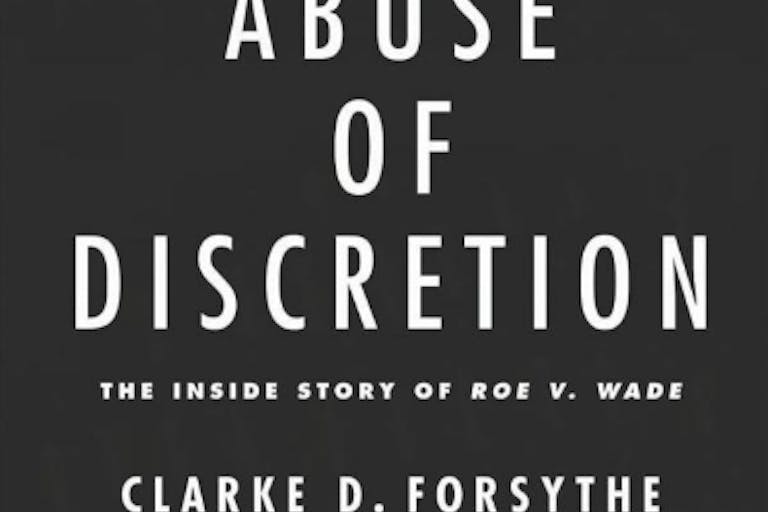
New book seeks to get out the truth on Roe v. Wade
I’m pro-life. I know abortion is bad. Therefore, I know Roe v. Wade was a bad decision for America. It wasn’t until last year though when I began to realize just how bad this controversial decision was, after watching an event put on by Law Students for Life. You may have read, back in January, around the time of Roe‘s 40th anniversary, that many Americans are misinformed about Roe v. Wade. Well, the more we hear about Roe, the worse it seems to get.
Clarke D. Forsythe, who is also the author of Politics for the Greatest Good, has written the book Abuse of Discretion: The Inside Story of Roe v. Wade. And the subtitle certainly says it all, for according to Clarke and his research, this was a decision made behind the scenes.
Americans United for Life put on two book launch events, both of which I had the privilege of attending. I was able to buy the book, and have it signed by Clarke.
Prior to the actual signing however, those present were treated to remarks from Charmaine Yoest, the President and CEO of Americans United for Life, Clarke D. Forsythe himself, as well as Professor Robert A. Destro, law professor at Catholic University of America, Professor John Eastman, who is a Henry Salvatori Professor of Law & Community Service at Chapman University School of Law, and Ovid Lamontagne, General Counsel for Americans United for Life.
There were many worthwhile remarks, summarized below, which may be complimentary to giving Abuse of Discretion a read. And during the evening reception, when I asked what he hopes readers will get out of his book, particularly those who take a pro-abortion stance or no stance, Clarke mentioned that he’s really hoping that more people will know the truth and reality about the case.
Clarke D. Forsythe began with a bit of a background as to how the justices made this decision behind the scenes. When we understand this case, we can understand how it has contributed to abortion in this country and the future of abortion. Clarke mentioned throughout that the audio for Roe v. Wade can be accessed online. He also reiterated that what we call Roe is actually two cases, Roe v. Wade and Doe v. Bolton. Together, these cases struck down abortion laws across all 50 states.
The history Clarke goes into would be fascinatingly coincidental, if not so tragic and consequential. When the case was taken in 1971, it was merely to decide a mundane procedural issue, jurisdiction between the states and the courts. However, what started as a procedural mistake by justices, became a complete skew of analysis. There was a crisis in 1971 on the Court, with the retirement of two justices. Before President Nixon could fill these spots, the balance of the Court was flipped and it turned into a case about abortion. The momentum could not be reversed.
Roe is indeed a unique case, and is arguably the most controversial one, which had the least record and fact to judge on it. Behind the scenes is what affected the decision the most.
Clarke also mentions what Roe is so well known for, the viability rule, for instance. However, viability is not mentioned once in the arguments. The trimester framework is not mentioned either. The case was mostly decided on the notion that abortion is safer than childbirth. In turn then, three mistakes ended up being what was so crucial to the decision.
This decision was also not inevitable. There are claims of the case being affected by the history of the 1960′s, and Clarke also argues that the justices themselves may have been influenced by the sexual revolution. However, had there not been the issue of dual vacancy, abortion would have most likely been left up to the states.
Article continues below
Dear Reader,
In 2026, Live Action is heading straight where the battle is fiercest: college campuses.
We have a bold initiative to establish 100 Live Action campus chapters within the next year, and your partnership will make it a success!
Your support today will help train and equip young leaders, bring Live Action’s educational content into academic environments, host on-campus events and debates, and empower students to challenge the pro-abortion status quo with truth and compassion.
Invest in pro-life grassroots outreach and cultural formation with your DOUBLED year-end gift!
Clarke referred to this notion, this medical mantra that abortion is safer than childbirth throughout. There were no records arguing for this though, and although the claim had been entered in by public interest groups, it never had been in the lower courts. Yet, it was the essential medical premise that drove the case. It not only drove the right to an abortion, but unfortunately the lack of health and safety regulations for those performed in the first trimester.
While there initially was a focus on 12 weeks, Clarke mentions how the justices began to negotiate behind the scenes for an expansion of 16, weeks, 4 whole months, to 28 weeks, without any data on women’s health. This move has been criticized by scholars.
Clarke hopes that Americans can better understand why the courts are out of touch with international standards then. The Court’s decision is also out of line with American public opinion, even what the opinion polls were saying in 1971 and 1972.
It is also an unfortunate and tragic consequence that Kermit Gosnell was allowed to remain unregulated because of what the Court decided; after all, as mentioned above, there is indeed a lack of health and safety regulations.
The Supreme Court justices attempted to turn unprecedented theories of abortion statutes into medicine without laws. This is an example of reaching a decision without court examples.
This book is also written so that those who are not lawyers can understand what happened 40 years ago and the mistakes that justices made. For what they did was legislate and impose a nation-wide policy rather than a Constitutional decision, one which conflicts with public opinion. Doe v. Bolton has especially failed as a sort of abortion review board. The states can certainly do a better job.
Closing remarks made by Ovid Lamontague and at the evening reception by Charmaine Yoest were more general, but also were of importance with regards to Roe.
Ovid Lamontague closed with the reflection that besides imagining a day when there is no Roe or Doe, we need to remind people that there are two victims of abortion: the unborn child and the mother who is exploited. I find such a word to be a well-chosen one, for Lamontague also mentioned how Gosnell is not an aberration, but is a result of Roe and Doe. People need to know more about the horrors of abortion on women. In his closing remarks in the evening, he also proclaimed that these abortionists are those who exploit women, who work in the red light of the health care system, but who are certainly not doctors, and are not held accountable.
Charmaine Yoest mentioned that this fight for life may seem like an obvious one to us, and that it may be difficult to get outside our frame of reference. It is important to know one’s enemy, however, and by reading Clarke’s book, we can better understand Roe and how we got there. It may be tempting to think of the case as organic and in the course of history which the pro-abortion side has convinced America of as being inevitable, but it was anything but organic. This case was not decided, but rather created, and in knowing this, we can be more strategic in our fight.
Please read the book yourself to further educate yourself on this consequential case. For even some pro-life lawyers don’t know everything about Roe. And be sure to look for my review in the next coming weeks!
Live Action News is pro-life news and commentary from a pro-life perspective.
Contact editor@liveaction.org for questions, corrections, or if you are seeking permission to reprint any Live Action News content.
Guest Articles: To submit a guest article to Live Action News, email editor@liveaction.org with an attached Word document of 800-1000 words. Please also attach any photos relevant to your submission if applicable. If your submission is accepted for publication, you will be notified within three weeks. Guest articles are not compensated (see our Open License Agreement). Thank you for your interest in Live Action News!

Angeline Tan
·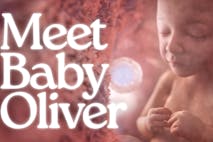
Media
Cassy Cooke
·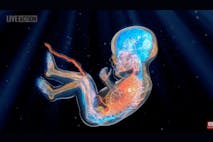
Media
Cassy Cooke
·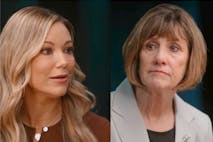
Human Interest
Kelli Keane
·
Analysis
Sheena Rodriguez
·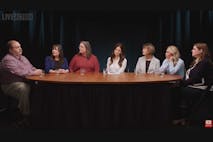
Analysis
Cassy Cooke
·
Fact Checks
Rebecca Downs
·
Newsbreak
Rebecca Downs
·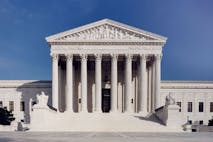
Newsbreak
Rebecca Downs
·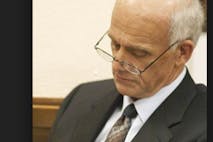
Newsbreak
Rebecca Downs
·
Newsbreak
Rebecca Downs
·